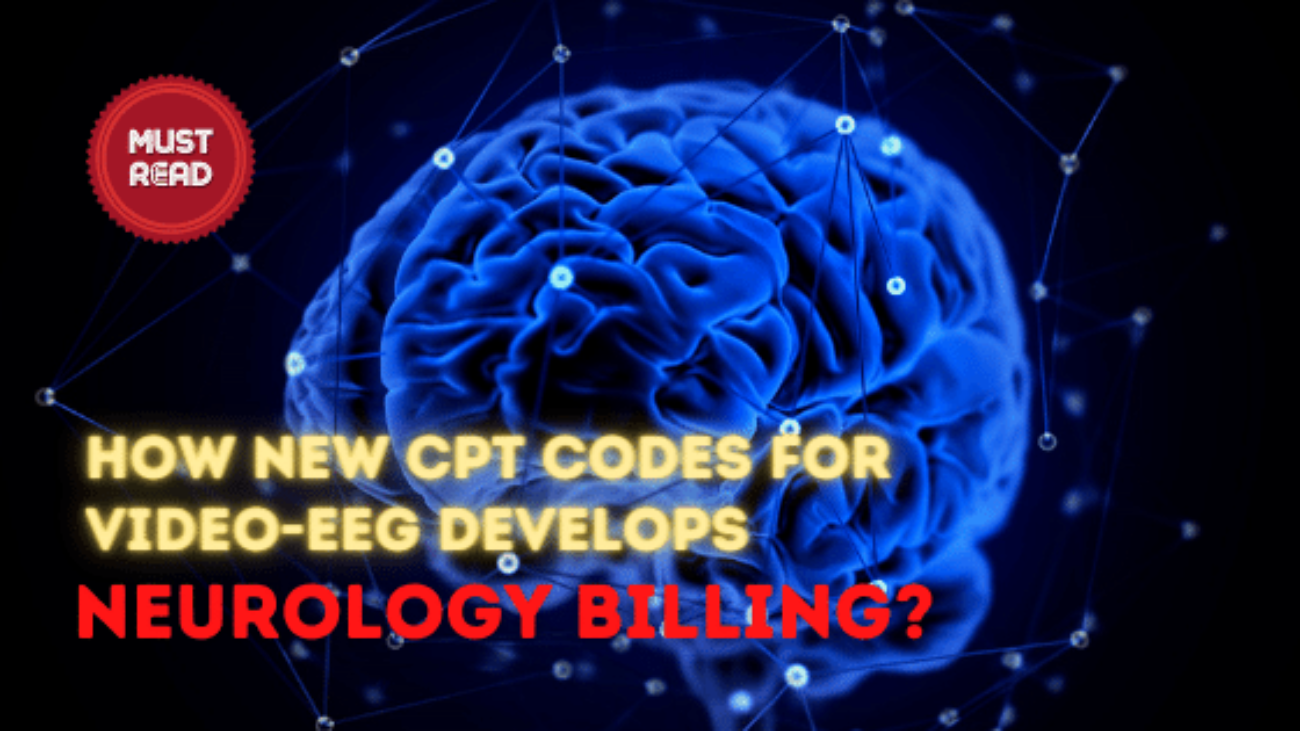You can’t afford to make coding mistakes, but it’s more critical to code accurately for Video-EEG in neurology billing. American Medical Association and Center for Medicare and Medicaid makes frequent changes by reviewing and revising the codes for neurology billing as well. The present process actually evaluates coding process which involves medical, surgical and also diagnostic procedures.
Including the process of review codes, AMA-CMS Relative Value Update Committee (RUC), reviews and sets the relative value units those are associated with the codes. Similar reviews were conducted for video-EEG monitoring codes. This particular code includes the EEG performed in Epilepsy monitoring unit or intensive care unit also ambulatory EEG monitoring.
The monitoring review includes both video EEG and EEG monitoring excluding the video. Several medical societies and representatives are deeply engaged with review stages of video-EEG monitoring. To understand it better, technical and professional services are coded with two different sets. Its way more different compared to mostly use neurology billing codes.
How new codes are developed for neurology billing?
- Healthcare provider’s Relative Value Update committee survey results are taken to set codes for physician’s or healthcare provider’s relative value units.
- The survey involves wide group of healthcare professionals from National Association of Epilepsy centers, The American Clinical Neurophysiology Society and Clinical Neurophysiology centers.
- The RUC survey of physicians depends on the estimated typical time consumed by healthcare professionals for every service and the intensity of work compared to different other services.
- Neuro diagnostic society has given inputs and survey in order to evaluate those technical components involved for each and every service. Even the healthcare industry representatives have contributed with the details and the way services are provided.
- So, those technical components inputs include technological staffing, supplies, as well as equipment for each kind of service.
- Few existing EEG monitoring codes were not reviewed for more than two decades. Meanwhile most of the services are provided efficiently and patient is treated and tested
- The typical patients will no more have depth electrode EEG with 150 channels, risk of bleeding from the depth of electrodes and use of EEG results for surgical decisions.
- Technological monitoring screens for seizures are mostly trained for better patient responsibility than years back. The efficiencies in the current generation of services actually result lower expenses compared to the years earlier.
- Due to these advances and efficiencies over time, Relative Valued Units are always lower.
About the codes Replacement for neurology billing:
- The new codes were effective in January 2020. These codes are replaced with the existing EEG monitoring codes for limited electrode set – 95950, Daily video EEG – 95951, Ambulatory EEG- 95953, and also daily EEG excluding the video – 95956.
What are the new physician codes?
- Physician codes usually describe various degrees and duration of services and separate if the video is added or included in the service.
- These different codes describe the monitoring for partial day, full day, also for 2,3 or 4 days. The new codes are:
- The recording duration 2-12 hour referred to partial day, for CPT code EEG – 95717, CPT video EEG- 95718.
- The recording duration 12-26 hours referred to full day, for CPT codes EEG – 95719,CPT codes for video EEG- 95720.
- The recording duration 30-60 hours, referred to 2 days, for CPT codes EEG- 95721, CPT codes for video EEG- 95722.
- The recording duration 60-84 hours, referred to 3 days, for CPT codes EEG- 95723, CPT codes for video EEG- 95724.
- The recording duration above 84 hours, referred to 4+ days, for CPT codes EEG- 95725, for CPT video EEG- 95726.
- For full day codes, it requires full daily recorded review, chart notes that’s conducted in the real time chart notes for each service.
- These codes are mainly used for typically daily EMU and ICU monitoring services. Those may include one day ambulatory studies. Six multiple day study codes actually include ambulatory recordings, where the records are interpreted and noted after record completion.
- Every code involves record review, analysis of automated spike and seizure directions used for ICU EEG monitoring.
- In neurology billing, if a service is stretched for many days, it will use full day codes along with review and daily chart notes.
- Partial day code is used together along with other codes. For the EMU service extending 30 hours, full day code is used for one day service and partial code is used for rest of the time.
- The proposed RUVs are lower than current codes 95950 via 95956. The Relative update codes survey physicians reported time and intensity work of EEG services and CMS are used for numbers to work RVUs.
- New and old RVUs are presented as below:
- The old CPT code for video EEG in EMU or ICU per 24 hours is 95951; ambulatory EEG service for 72 hours excluding video is 95953.
- The new CPT code for video EEG in EMU or ICU per 24 hours, 95723, ambulatory EEG service for 72 hours excluding video is 95723.
- Old code for RVUs is 5.99 for video EEG in EMU or ICU per 24 hours, ambulatory EEG service for 72 hours excluding video is 9.24
- New code for RVUs is 3.50 for video EEG in EMU or ICU per 24 hours, ambulatory EEG service for 72 hours excluding video is 4.75
Hope you got the information on neurology billing. For more suggestions, please comment below, we will definitely consider them if relevant. For more queries and updates on healthcare, please subscribe to our blog.




